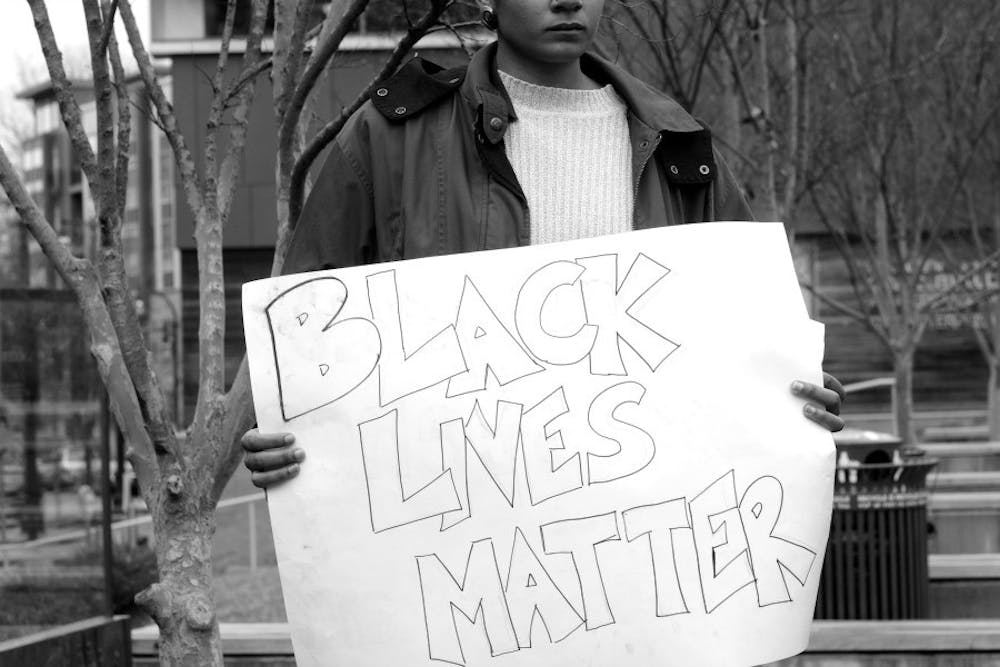The United States has a systematic policing problem where police officers operate with virtual impunity from their actions and it particularly leans on persons of color.
Case in point: Cleveland, where on Nov. 22, Officer Timothy Loehmann shot and killed 12-year-old Tamir Rice within two seconds of approach, as seen on the surveillance video.
Rice had a BB gun with the orange indicator sticker missing.
The Associated Press noted discrepancies in the police report versus the surveillance footage. In the footage, Rice is alone under a pavilion in a park. In the report, police said he was with a few people (giving credence to the fear of his threat to others).
Likewise, Officer Loehmann claimed he told Rice to put his hands up three times. In the footage, Rice is shot within two seconds of Officer Loehmann arriving on the scene. While that doesn't disprove his claim, being able to give three commands and allow time for the person in question to meet that command in a mere two seconds is dubious at best.
Rice's family filed a wrongful death lawsuit and the city of Cleveland responded in kind, saying, Rice's injuries were caused by his own failure to exercise "due care," according to NBC News.
That's rich coming from the city of Cleveland. After all, Officer Loehmann was deemed unfit for duty by his previous employer. According to The Guardian, he was "faulted for breaking down emotionally while handling a live gun."
"His handgun performance was dismal," deputy chief Jim Polak of the Independence, Ohio police department wrote in an internal memo. The memo concluded that Loehmann ought to be released. The Guardian notes that he resigned shortly after.
The Cleveland Police Department then equipping Loehmann with a badge and a gun is not an uncommon practice. Officers accused of wrongdoing in one department merely come on board with another department.
For instance, WBNS-10TV, based out of Central Ohio, did an investigation into this issue and found "troubled officers moving from department to department. The investigation also found that there are no formal rules on background checks that might prevent officers from slipping through hiring reviews."
Furthermore, the Cleveland Police Department as a whole was under investigation for two years by the Justice Department, which found that, "Officers there have engaged in a pattern of excessive and deadly force against residents - using guns, tasers, chemical spray and fists - in violation of their rights," according to the Washington Post.
Not surprisingly, the Justice Department's report said officers were not being held accountable and, in many instance, reports weren't even being taken.
Worst yet, the Justice Department issued similar findings about the Cleveland Police Department in another report. From ten years ago. Let that sink in.
Finally, the Cleveland Police Department dispatcher did not relay the 911-caller's message that the BB gun Rice was holding when shot was "probably fake."
When I was 13, my two friends and I were running around the neighborhood with BB guns. It was the height of Jackass on MTV, so we reveled at the sight of purple welts on our backs and shoulders.
One of our friends, rightly so, was afraid to take the BB shot, so naturally, we chased him around the neighborhood. His father soon put a stop to it with a tirade that stung worse than the BB.
Luckily for my friends and I, unlike Rice in Cleveland, we're white and middle class.
While the systematic issue in today's policing leans on all of us, it particularly leans on people of color. In Rice's case, Officer Loehmann told dispatch that Rice was "maybe" a 20-year-old.
This discrepancy between the actual age of black boys and the perception of their age is manifest in studies.
For instance, the American Psychological Association's Journal of Personality and Social Psychology published a study in which there's evidence of an unconscious "dehumanization bias" against black people, according to Vox.
"Our research found that black boys can be seen as responsible for their actions at an age when white boys still benefit from the assumption that children are essentially innocent," Phillip Atiba Goff, author of the study, said.
The city of Cleveland certainly thought Rice was responsible for his own death.
But again, it's worth stressing that this issue is an issue for all of us, regardless of race or class. The top law enforcement officer in the United States, FBI Director James Comey, certainly thinks so.
"We can roll up our car windows, turn up the radio and drive around these problems," Comey said in a speech to Georgetown University on policing and race.. "Or instead we can choose to have an open and honest discussion about what our relationship is today, what it should be, what it could be, what it needs to be if we took more time to better understand one another."
The top law enforcement officer has no clear idea how often police officers kill citizens in the United States. The need for that raw data set doesn't even get into whether they are justifiable shootings.
"It's ridiculous I can't tell how many people were shot by police," Comey said.
I don't know how many more Tamir Rice's, Eric Garner's, Antonio Zambrano-Montes' and John B. Geer's there have to be in the country before more people are demanding police reform.
Unfortunately for those individuals, police reform never came for them.

